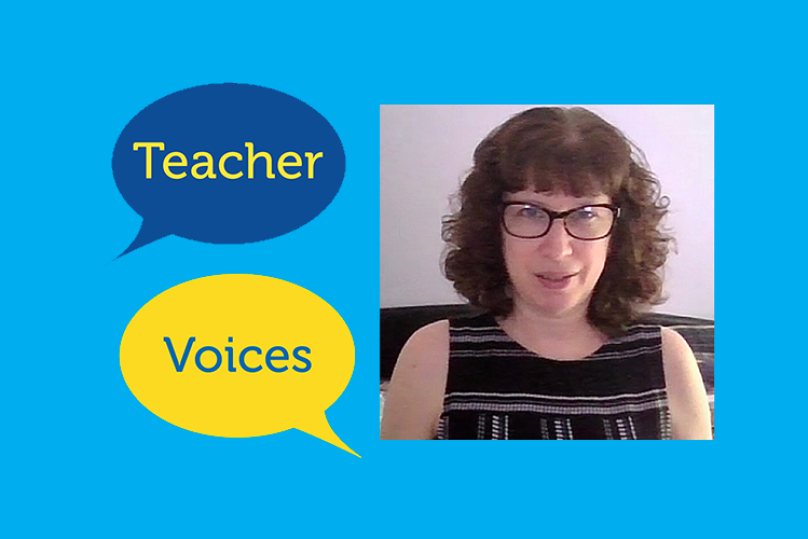
By MƒA Master Teacher Robin Norwich, NBCT
It was a long school year for many reasons. The pandemic brought us many new challenges, and it also exposed the inequalities that were already an inherent part of the school system. I have always loved the diversity of New York City public schools. However, this beautiful blend of student identities brings with it a frightening disparity of access to virtual learning. There are so many ways the students have struggled: lack of devices, poor internet, and noisy, crowded living arrangements, to name a few. The struggle intensifies when we consider students who are affected by the loss of loved ones and the rising unemployment rates. Under the enormous weight of these challenges there have been some bright spots that have carried me through. I will reflect on some of the “positives” I’ve experienced from this past year, with the hope that teachers, parents, students, and the public realize that we have and are getting through this together.
I have learned a lot about teaching and my students this year, perhaps more than ever. As we plan a return to school this fall, I’ve been thinking about what I will take with me from the virtual classroom. Here are some ideas based on my experience:
- Extra trees. Switching to a virtual classroom helped me rethink how I share information with my students. I had been making and using about 3,000 copies of lessons, activities, and tests per month. Now I use my own website and Google classroom to organize, store, and distribute assignments. This is great for the students and for the environment.
- Less shy. Last year I noticed that many of my students who were too shy to speak in class were willing to communicate through chat. They also have been chatting privately with me much more frequently. In every classroom there needs to be a variety of ways for students to share what they know and what they need.
- Fewer problems. In my virtual world there have been fewer conflicts or disruptions. My students come into the virtual classroom and often say or chat “good morning,” and when class is over they say or chat “have a great day” and “thank you.” In my experience, they have responded, engaged, and asked questions in a different way than in-person. The environment is less rushed and there is more time for pleasantries. This year, I will continue to include warm-ups that are focused on each students’ well-being.
- Easier grouping. In a physical classroom, changing groups for student interactions is a tedious process. Students have to be given new seat assignments and desks rearranged. In a virtual setting, breakout rooms can be created to put students in pairs or groups. By using a rubric for student roles, virtual groups can be just as effective as in-school groups. Zoom also allows me to pop into a breakout room to check on a group without squeezing my way through 34 desks. I can even virtually pop into a group whiteboard to comment while the group is working without disrupting their flow. This upcoming year I plan to use laptops and Jamboards for collaborative work, which will replace the need for chart paper.
- Fresh classroom. With 34 students in my classroom, it’s been nearly impossible to give everyone a “good” seat, and it’s often hard for students to see the board. In the remote classroom, everyone can sit where they want and can clearly see the board. On Zoom, I can see all the whiteboards at the same time, comment, and share the work with the class. I can even see if a student has finished the assignment or is still on the first question. This helps a lot with timing and to assess student ability levels. Using tools like Peardeck and Desmos can bring the board to the students and their work to me – even in a physical classroom.
- New understanding. It takes a lot of work to know my students in a remote learning setting. I created Zoom meetings where students could pop in for extra help and for a student chit chat hour. I have been using Google Form surveys to check in with the students regularly. We talk over chat, email, Zoom, Google Meet, and the phone, and I am better able to help them when they need it. These are all tools that I will continue to use even as we leave the virtual classroom.
- Better organization. In both the virtual and in-person world, internet and personal issues can sometimes stand in the way of students attending class at the regularly scheduled time. To offset this loss of class time, I created virtual classroom files with motivational quotes, my personal Bitmoji dancing, and all lesson slides and activities – it’s a complete, packaged digital lesson that is easily shared with students. In addition, I record and share every synchronous lesson.
- Increased flexibility. This year I have taken some small detours from the standard curriculum. I spent a few days teaching about black holes. We also spent time taking a career interest survey and researching college majors. This took minimal time from my other lessons and helped build teamwork and empathy.
- More compassion. As in life, compassion should be the priority in every classroom. This starts with listening to the students and ensuring they have every opportunity to be successful. For me, it has meant creating more student choice boards and using different methods of assessment. It has also become less important for work to be turned in by an arbitrary due date. I make sure my students know I care about their well-being and, in return, they give me their best.
One of the things that I love about teaching is that I never stop learning. Every lesson is an opportunity for growth – and not just for the students.
